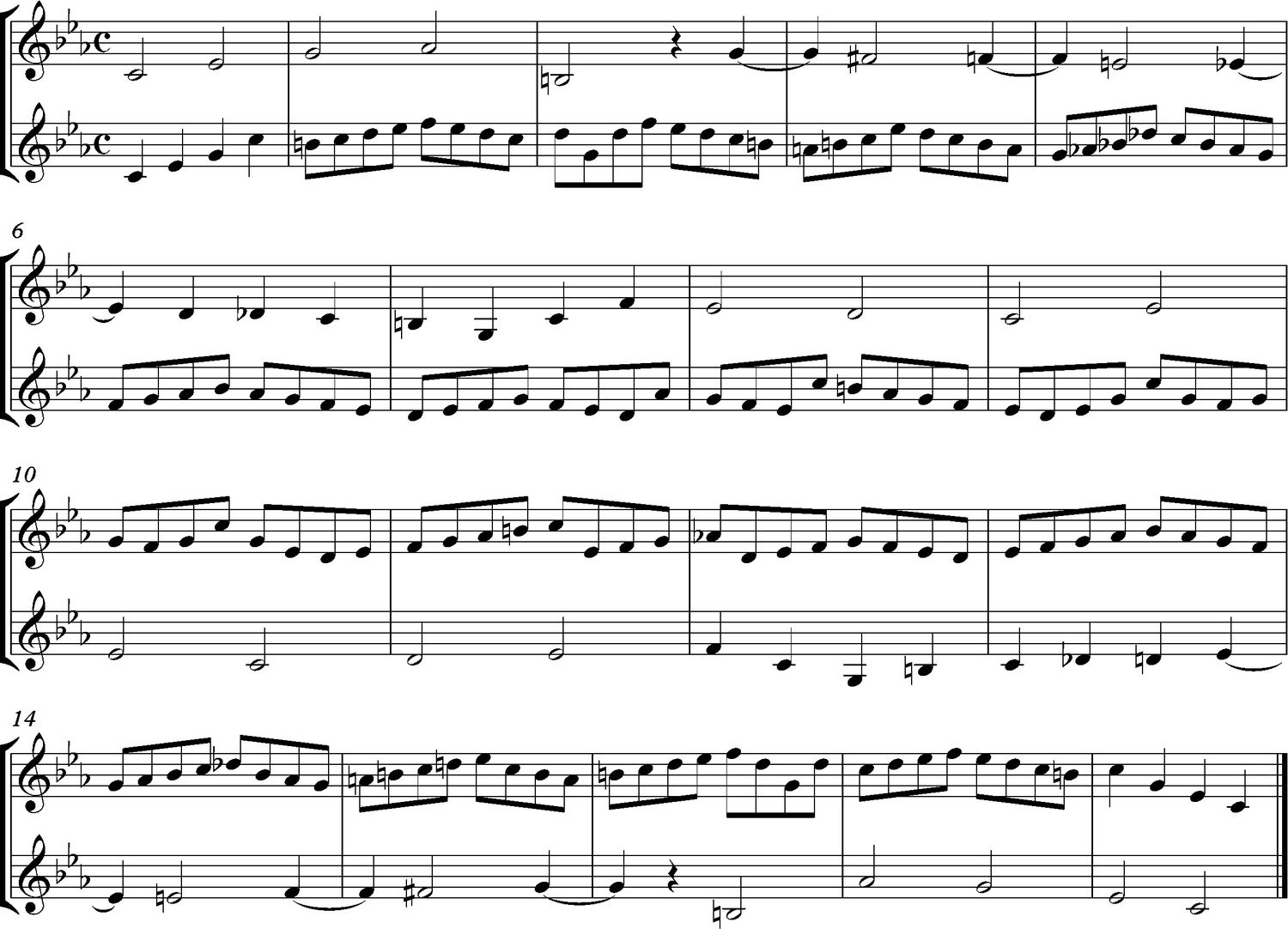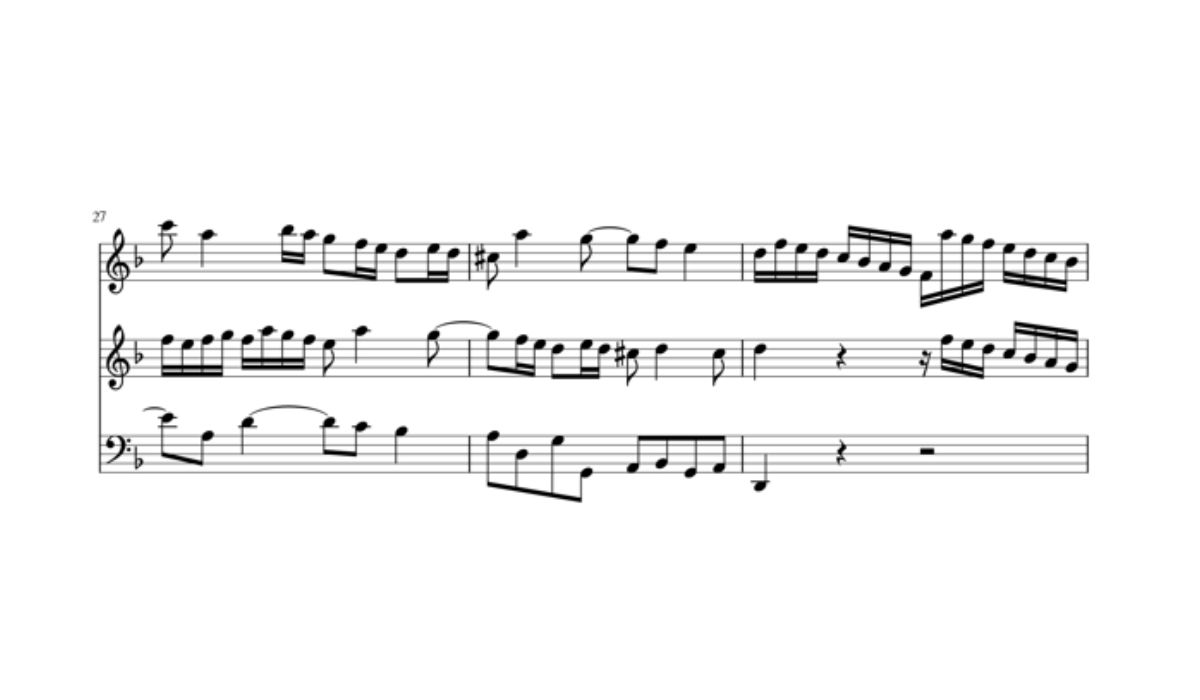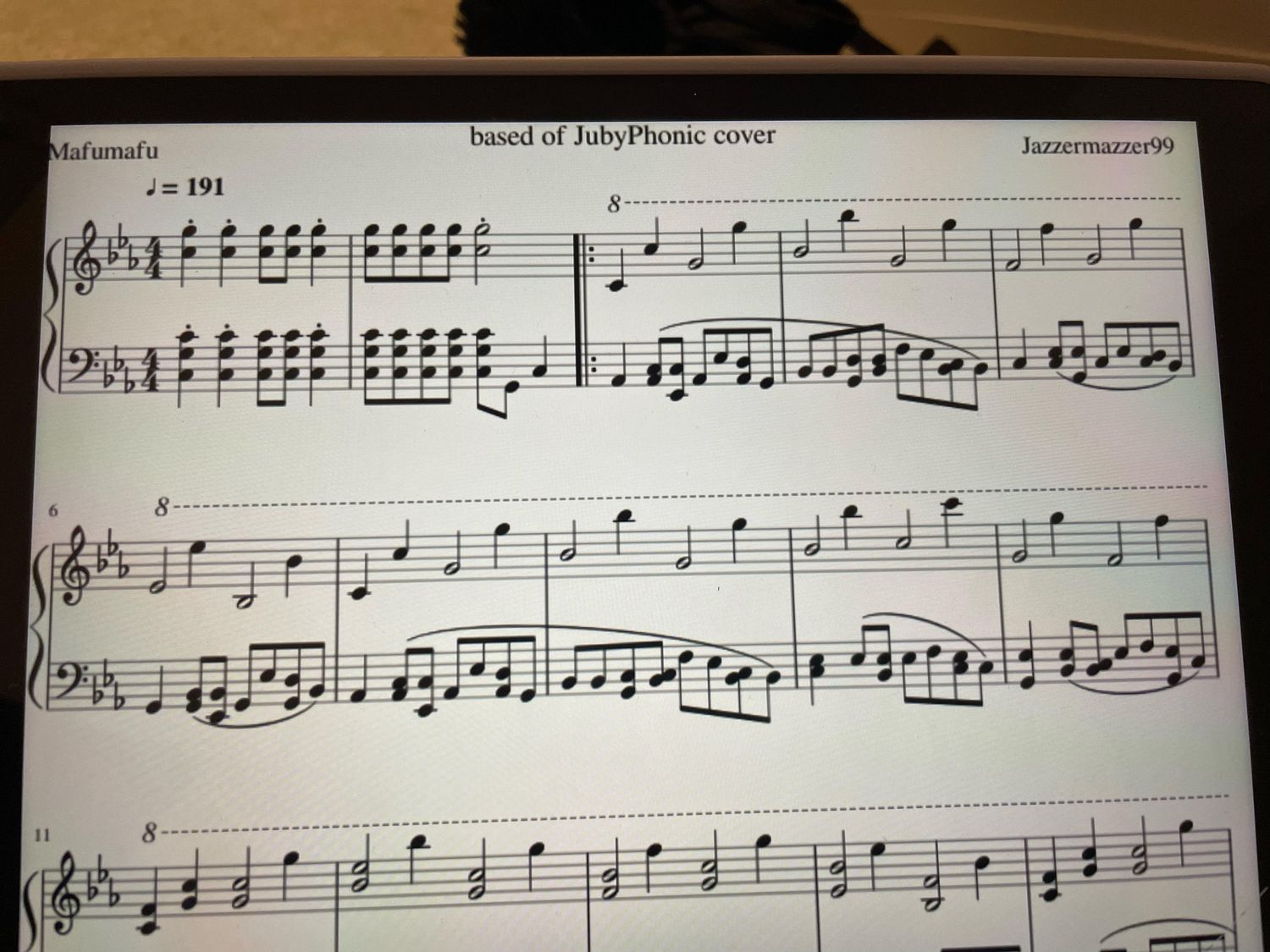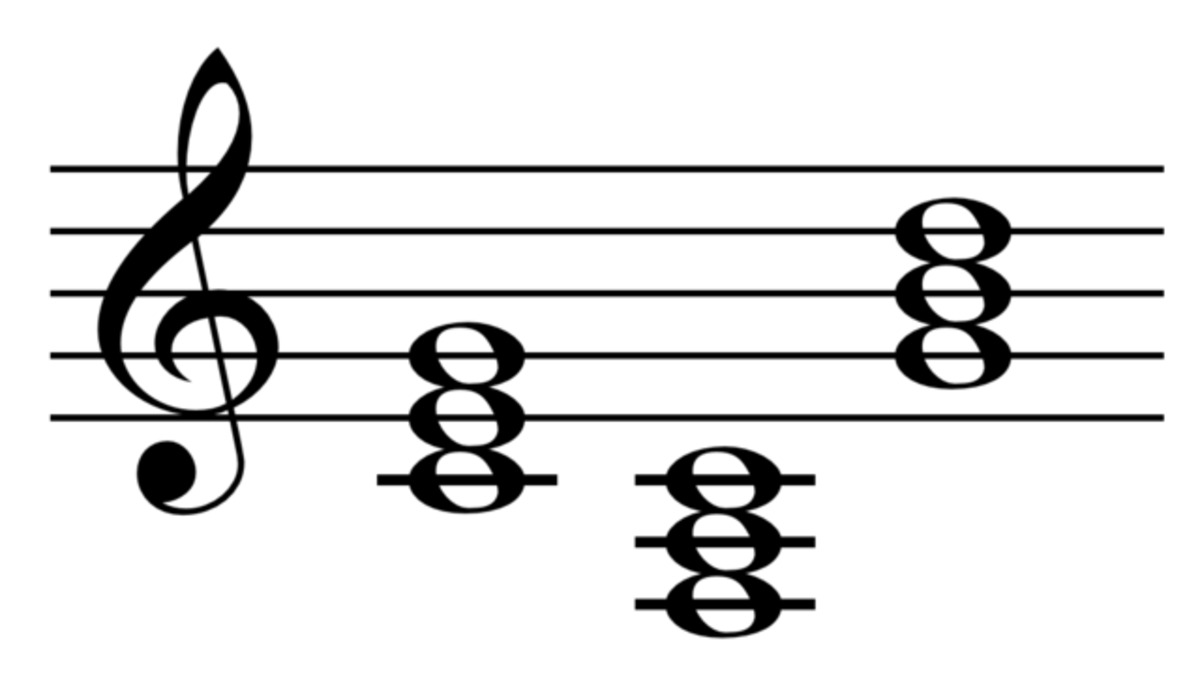Home>Instruments>Guitar>What Is Guitar Music Theory


Guitar
What Is Guitar Music Theory
Published: February 15, 2024
Learn the fundamentals of guitar music theory to enhance your playing. Discover how to apply theory to the guitar and improve your musical skills.
(Many of the links in this article redirect to a specific reviewed product. Your purchase of these products through affiliate links helps to generate commission for AudioLover.com, at no extra cost. Learn more)
Table of Contents
Understanding Guitar Music Theory: A Comprehensive Guide for Players
Introduction
So, you've picked up a guitar and started strumming away, perhaps learning a few chords and playing some of your favorite songs. But have you ever wondered about the underlying principles that govern the music you're creating? That's where guitar music theory comes into play. It's the roadmap that helps you understand how music works, allowing you to express yourself more fluently and creatively on the instrument.
Guitar music theory encompasses a wide range of concepts, from understanding basic notation and chord structures to delving into scales, modes, and improvisation. While it may seem daunting at first, especially for those new to the instrument, grasping the fundamentals of music theory can significantly enhance your playing and overall musicality.
In this comprehensive guide, we'll explore the essential elements of guitar music theory, breaking down complex concepts into digestible pieces that are easy to understand and apply. Whether you're a beginner seeking to expand your musical knowledge or an experienced player looking to deepen your understanding of the instrument, this guide will provide valuable insights and practical tips to elevate your guitar playing.
Let's embark on a journey through the fascinating world of guitar music theory, where we'll uncover the building blocks of music, decode the mysteries of scales and chords, and discover how to apply these principles to create captivating music on the guitar. So, grab your guitar, tune up, and get ready to unlock the secrets of guitar music theory!
Understanding Basic Music Theory
Before delving into the specifics of guitar music theory, it’s essential to grasp the foundational principles of music theory as a whole. At its core, music theory is the study of the structure and elements that make up musical compositions. It provides a framework for understanding how music is organized and composed, allowing musicians to communicate and interpret musical ideas effectively.
One of the fundamental aspects of music theory is the concept of pitch, which refers to the perceived frequency of a sound. In Western music, the standard pitch system is based on a set of twelve notes, known as the chromatic scale, which includes both natural notes (e.g., A, B, C) and sharps/flats (e.g., A#/Bb, C#/Db). Understanding the arrangement of these notes and their relationships forms the basis of music theory.
Rhythm is another crucial component of music theory, governing the timing and duration of musical notes and rests. It involves understanding time signatures, note values, and rhythmic patterns, all of which contribute to the overall feel and groove of a piece of music.
Harmony, the combination of simultaneous musical notes, plays a significant role in music theory as well. It involves understanding chords, chord progressions, and the principles of chord construction. By exploring harmony, musicians can create rich, layered sounds and explore the interplay between different musical elements.
Form and structure are also integral to music theory, as they dictate the organization of a musical composition. Understanding the various forms, such as verse-chorus, AABA, or sonata-allegro, provides insight into how pieces of music are constructed and arranged.
As a guitarist, developing a solid understanding of these basic music theory concepts lays a strong foundation for exploring guitar-specific theory and techniques. It enables you to communicate with other musicians, analyze and interpret music more effectively, and unlock new creative possibilities on the instrument.
Now that we’ve established the fundamental principles of music theory, let’s transition to the application of these concepts within the context of guitar playing.
Applying Music Theory to Guitar
Once you have a solid grasp of basic music theory principles, the next step is to apply this knowledge to the guitar. Understanding how music theory translates to the fretboard empowers you to navigate the instrument with confidence and creativity.
One of the key elements of applying music theory to the guitar is understanding the relationship between notes, intervals, and scales. The fretboard layout and tuning of the guitar present unique opportunities and challenges for visualizing and playing musical patterns. By understanding the structure of scales and how they align with the fretboard, you can unlock a wealth of melodic and harmonic possibilities.
Furthermore, learning the principles of chord construction and progressions is essential for guitarists. Music theory provides insights into the formation of chords, including major, minor, dominant, and extended chords. Understanding the theory behind chord progressions equips you to create compelling harmonic sequences and navigate the harmonic landscape of various musical styles.
Armed with this knowledge, you can explore the art of improvisation and soloing on the guitar. Music theory offers a framework for understanding scales, modes, and melodic patterns, enabling you to express yourself fluently and creatively during improvisational passages. Whether you’re crafting a soulful blues solo or weaving intricate melodies in a jazz context, a solid understanding of music theory enhances your improvisational skills.
Additionally, music theory provides valuable insights into the principles of rhythm and timing, which are crucial for guitarists. Understanding rhythmic notation, strumming patterns, and time signatures allows you to develop a strong sense of groove and rhythmic precision in your playing.
By applying music theory to the guitar, you can transform theoretical concepts into practical tools for musical expression. It’s the bridge that connects the theoretical understanding of music with the tactile experience of playing the instrument, allowing you to communicate emotions, ideas, and stories through your music.
As we continue our exploration of guitar music theory, we’ll delve deeper into specific concepts such as chords, scales, notation, and practical applications, providing you with a comprehensive toolkit for elevating your guitar playing to new heights.
Chords and Scales
Chords and scales form the backbone of musical harmony and melody, playing a pivotal role in the world of guitar music theory. Understanding the construction and application of chords and scales empowers guitarists to create rich, expressive musical landscapes.
When it comes to chords, music theory provides a systematic approach to understanding their structure and function. Chords are formed by stacking specific intervals of notes on top of each other, creating harmonic richness and emotional depth. Whether it’s the bright, uplifting sound of a major chord or the melancholic, introspective quality of a minor chord, each chord type carries its own unique emotional resonance.
Furthermore, delving into extended chords, such as 7th chords, 9th chords, and beyond, adds further color and complexity to harmonic progressions. Understanding the theory behind these extended chords equips guitarists with the tools to infuse their playing with sophisticated harmonies and captivating voicings.
On the other hand, scales provide the raw material for melodic expression. By understanding the construction of scales and their relationship to chords, guitarists can navigate the fretboard with purpose and creativity. Scales lay the foundation for crafting captivating melodies, improvising fluidly, and understanding the tonal palette available within a musical context.
Moreover, exploring different scale types, such as the major scale, natural minor scale, pentatonic scale, and modes, opens up a world of melodic exploration and expression. Each scale type carries its own distinct flavor and character, allowing guitarists to evoke a wide range of emotions and moods through their playing.
As a guitarist delves into the realm of chords and scales, they uncover the interconnected nature of harmony and melody, gaining insights into the inner workings of musical expression. Whether strumming a chord progression that tugs at the heartstrings or weaving intricate melodic passages that captivate the listener, the fusion of chords and scales forms the essence of musical storytelling on the guitar.
As we continue our journey through guitar music theory, we’ll explore practical applications of chords and scales, providing you with the tools to infuse your playing with depth, emotion, and creativity.
Notation and Tablature
When it comes to communicating musical ideas and compositions, notation and tablature serve as indispensable tools for guitarists. Understanding how to read and interpret these forms of musical notation is essential for expanding your repertoire, learning new pieces, and collaborating with other musicians.
Standard musical notation, commonly used in sheet music, provides a universal language for expressing musical ideas across different instruments and genres. It conveys essential information such as pitch, rhythm, dynamics, and articulations, offering a comprehensive representation of a musical piece. For guitarists, standard notation allows for precise interpretation of melodies, chords, and intricate musical passages, providing a deeper understanding of the music being performed.
In contrast, guitar tablature, or “tab,” offers a specialized form of notation tailored specifically to the instrument. Tablature represents the strings and frets of the guitar, providing a visual roadmap for playing songs and compositions. It’s particularly popular among beginners and those who may not have formal training in standard notation, offering a user-friendly way to learn and share music within the guitar community.
One of the advantages of tablature is its intuitive representation of fretboard fingerings, making it easier for guitarists to visualize and execute musical passages without extensive knowledge of standard notation. Additionally, tablature often includes rhythmic notation, providing guidance on timing and duration while learning a piece.
Understanding both standard notation and tablature equips guitarists with versatile tools for learning and performing music. It allows for seamless communication with other musicians, regardless of their preferred notation method, and expands the guitarist’s musical vocabulary by embracing different forms of musical representation.
As technology continues to evolve, guitarists also have access to digital tabs and notation software, offering interactive learning experiences and collaborative platforms for sharing musical ideas. These advancements further enhance the accessibility and functionality of musical notation, empowering guitarists to engage with a vast library of music and educational resources.
By mastering the art of interpreting notation and tablature, guitarists can embark on a musical journey enriched by a diverse array of musical compositions, styles, and techniques. Whether deciphering a classic guitar piece from a renowned composer or learning the latest chart-topping song, notation and tablature serve as invaluable allies in the guitarist’s quest for musical excellence.
Practical Applications of Guitar Music Theory
As a guitarist, applying music theory in practical contexts enhances your playing, songwriting, and overall musical proficiency. By integrating theoretical knowledge with hands-on applications, you can unlock a myriad of creative possibilities and elevate your musical expression.
Understanding chord progressions and their harmonic function empowers you to compose compelling songs and arrange existing pieces with depth and sophistication. Whether you’re crafting emotive ballads, energetic rock anthems, or intricate jazz compositions, a solid grasp of chord progressions allows you to infuse your music with captivating harmonic movement and tonal color.
Moreover, delving into the realm of improvisation opens doors to spontaneous musical expression. Drawing from your knowledge of scales, modes, and melodic patterns, you can weave captivating solos and improvisational passages that reflect your unique musical voice. Improvisation serves as a playground for experimentation, allowing you to explore new sounds and push the boundaries of your creativity on the guitar.
Additionally, music theory provides valuable insights into the art of transcribing and arranging music for the guitar. Whether you’re adapting a piano piece, interpreting a vocal melody, or arranging a symphonic composition, understanding music theory facilitates the process of translating complex musical arrangements into guitar-friendly formats, expanding your repertoire and musical versatility.
Furthermore, exploring the principles of rhythm and timing enhances your ability to groove and connect with other musicians in ensemble settings. Whether playing in a band, jamming with friends, or collaborating on musical projects, a solid foundation in rhythmic theory allows you to anchor the rhythm section with precision and confidence.
By embracing the practical applications of guitar music theory, you transform theoretical concepts into tangible tools for musical expression. It’s the fusion of knowledge and creativity that fuels your growth as a guitarist, allowing you to communicate emotions, stories, and experiences through the universal language of music.
As you continue to explore the depths of guitar music theory, remember that each theoretical concept has real-world implications for your playing and musical journey. Whether you’re composing, improvising, arranging, or performing, the fusion of theory and practice shapes you into a versatile, expressive guitarist with a deep understanding of the language of music.
Conclusion
Congratulations on embarking on this enriching journey through the realm of guitar music theory. As we conclude our exploration, it’s essential to reflect on the transformative power of theoretical knowledge and its profound impact on your musical endeavors as a guitarist.
By delving into the intricacies of music theory, you’ve gained a deeper understanding of the building blocks of music, from the fundamental principles of pitch and rhythm to the nuanced interplay of harmony and melody. This newfound knowledge serves as a compass, guiding you through the vast landscape of musical expression and creativity.
Understanding how music theory applies to the guitar has equipped you with a versatile toolkit for navigating the fretboard, crafting compelling compositions, and expressing yourself fluently through the instrument. Whether you’re strumming chords, weaving melodic passages, or improvising soul-stirring solos, the fusion of theory and practice has elevated your playing to new heights.
Moreover, your proficiency in interpreting musical notation and tablature has expanded your musical horizons, providing access to a wealth of diverse musical compositions and educational resources. This ability to communicate and interpret musical ideas across different notation formats enhances your versatility as a guitarist and enriches your musical repertoire.
As you continue your musical journey, remember that the fusion of theory and practice is a dynamic, ongoing process. Each theoretical concept you’ve explored has practical implications for your playing, songwriting, and collaborative endeavors. Embrace the synergy of knowledge and creativity, and allow it to fuel your growth as a versatile, expressive guitarist.
Whether you’re composing original music, interpreting timeless classics, or collaborating with fellow musicians, the profound impact of guitar music theory will continue to resonate through your musical endeavors, shaping you into a well-rounded musician with a deep appreciation for the art and science of music.
So, as you pick up your guitar and embark on your next musical exploration, carry with you the insights and wisdom gained from this journey through guitar music theory. Let the harmonious fusion of theory and practice be your guiding light, illuminating a path filled with endless possibilities for musical expression and creativity.
Keep strumming, keep learning, and keep embracing the transformative power of guitar music theory. Your musical odyssey has only just begun.











